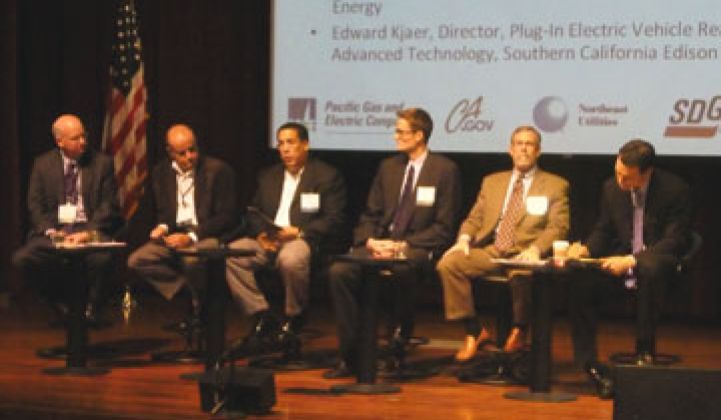The lack of transformers exploding in neighborhoods with electric vehicles is at least a little disappointing to some people who predicted it, but it's no surprise to the utilities that have worked to ensure they are ready for the trickle of EVs coming into their territories.
California utilities are some of the leaders in this area, working on distribution automation projects to ensure that every cul-de-sac with an electric vehicle has the power supply it needs.
At the upcoming Greentech Media conference The Networked EV: Smart Grids and Electric Vehicles, David Leeds, senior manager of smart grid research at GTM Research will take a deep dive into these issues with a panel that includes:
· Dan Bowermaster, Manager of Electric & Natural Gas Vehicles, On-bill Financing, and Emerging Technologies at PG&E
· John LoPorto, President and CEO, Power Tagging
· Mozhi Habibi, Strategy Manager for Global Energy & Utilities at IBM
· Phil Davis, Senior Manager of Demand Response Solutions at Schneider Electric.
Although EVs are just a drop in the automotive bucket today, some estimate there could be millions on the road within a decade. Another panel at the event will discuss emerging solutions for integrating electric vehicles with the grid, from new feeder configurations to work on protocols and standards. In San Diego Gas & Electric territory, for example, there are hundreds of EVs, and some circuits have 20 percent penetration of EVs. Distribution automation is a very real focus in order to handle the fluctuations that distributed generation and electrified transportation are bringing.
The panel will go beyond the rhetoric of the threat of exploding transformers and move into examining the ways that distribution automation and other smart grid/EV integration can empower drivers -- and utilities -- to get the most out of the system.
Now that a smattering of EVs are in garages and on the roads, the conference will also take a look at what’s next in terms of the market and technologies. Vehicle-to-grid still will not be available to individual consumers for years, but it is also coming faster than anyone thought with fleet pilots already underway or in planning stages in Europe and the U.S.
Range anxiety, it turns out, is real -- but also fades once people get to know their own driving habits. Still, buffers seem to help. In some areas, like Texas, more than 90 percent of EV drivers in the region have signed up for eVgo, NRG Energy’s subscription charging plan. Fast DC charging is also coming, with hundreds in place by the end of this year. Does this mean 'Build it and they will come'? An afternoon panel moderated by GTM Research analyst Emma Ritch will look at networked cars, fast charging and other emerging infrastructure. How much do we need, and where should it go? What other services might be layered into this mix?
Lastly, early adopters are still on waiting lists. But what about after that? Upfront cost remains a barrier for the average car driver. If EVs are going to truly come into the market -- and even hybrids today only make up about three percent of the light-duty vehicles in the U.S. -- cost needs to come down, and that means cheaper batteries.



